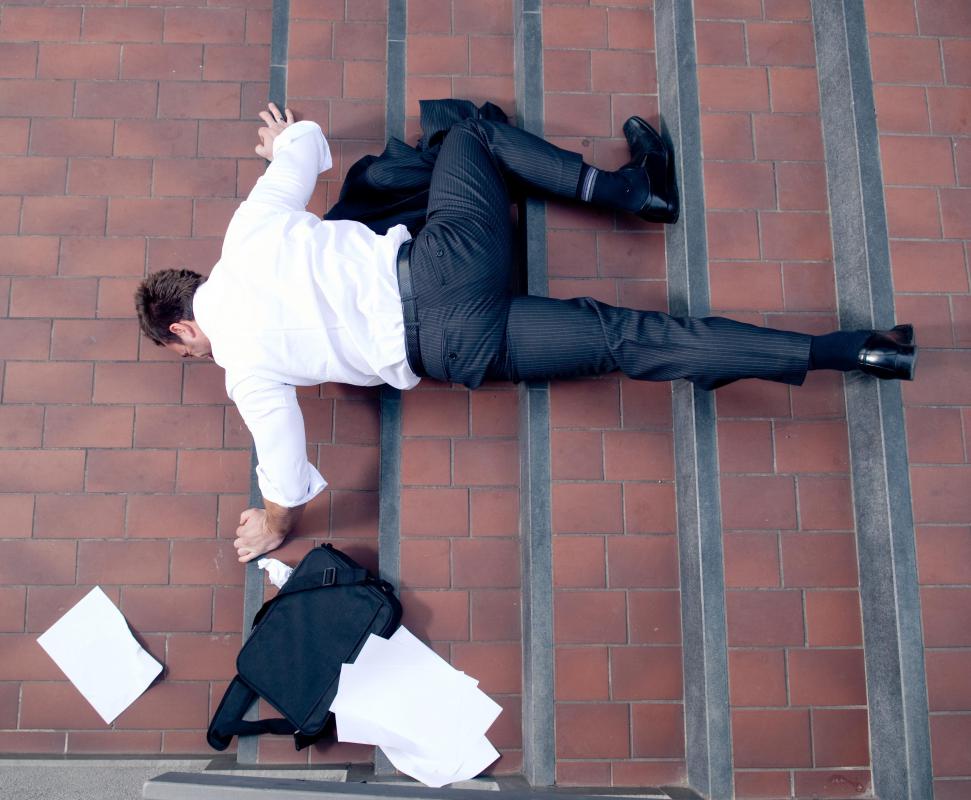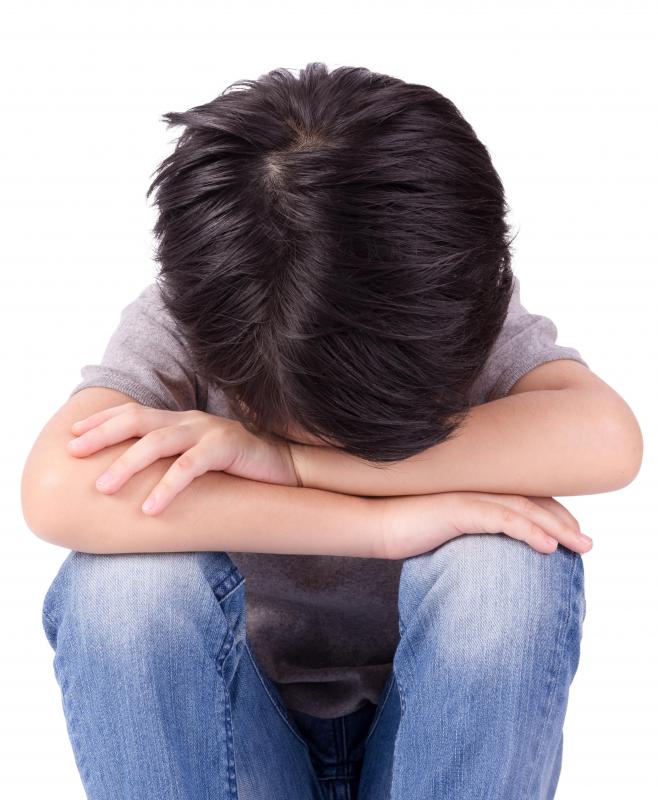At WiseGEEK, we're committed to delivering accurate, trustworthy information. Our expert-authored content is rigorously fact-checked and sourced from credible authorities. Discover how we uphold the highest standards in providing you with reliable knowledge.
What is Orthostasis?
Orthostasis is a term which means "standing upright." This term is often used interchangeably with "orthostatic hypotension," a condition in which people develop low blood pressure within three minutes of standing. Although this is technically incorrect, this usage is very common.
People of all ages can develop this condition, but it is more common in older adults, due to vascular changes and general physical changes which occur with age. When someone with this condition moves suddenly from a lying to sitting position, or from a sitting to standing position, a momentary drop in blood pressure is experienced.

The patient may feel dizzy or lightheaded. Sometimes people experience vertigo, and can be at risk of falling down. In some cases, the patient develops syncope or fainting, in which there is a temporary loss of consciousness which can be accompanied with disorientation. For older adults, the dizziness and fainting can be especially dangerous because the patient can be at risk of a severe fracture in a fall. After the patient has remained standing for a little while, the low blood pressure usually resolves.

Also known as postural hypotension, orthostasis can be diagnosed with the use of a tilt table test. A doctor may suspect that a patient has this condition on the basis of the symptoms the patients reports. On the tilt table, the patient is moved quickly from a lying to standing position while strapped in place for safety. If the patient's blood pressure drops as a result of the move, the patient has orthostasis.

There is no treatment for orthostasis. Patients who develop this condition are usually advised to use care when transitioning from a sitting to standing position and to be careful when getting out of bed after a night's sleep or a rest. Moving slowly allows the body to adjust to the change in position so that the blood pressure remains relatively stable. Alerting friends and family members to the problem may also be recommended so that the patient can receive assistance and accommodations as needed.

Sometimes, a patient may have this condition as a result of an underlying medical problem. If a patient is diagnosed with postural hypotension, the doctor may request additional medical testing to assess the patient's overall health for the purpose of looking for any other medical issues which might be contributing to blood pressure problems. If the patient has other conditions, treatment for these may also resolve the blood pressure issue.
AS FEATURED ON:
AS FEATURED ON:















Discussion Comments
"There is no treatment for orthostasis". This is incorrect. Examples of treatment include medications such as Midodrine, fluoxetine, and mestinone. Compression stockings and increasing sodium intake is also usually recommended, as well as exercises such as walking up hills.
One of my co-workers was telling me about her sister who has one of those low blood pressure conditions. It's called orthostatic intolerance.
It's different than just regular orthostasis. Instead of getting dizzy from low blood pressure just when you stand up, it hits you a few minutes later.
She says a few minutes after her sister gets up, she sometimes feels dizzy, tired, her eyes aren't focused, and she feels light headed. The doctor has told her that there's some problem with the low blood pressure that causes blood to flow down to her legs and stay there. She might start taking some medicine for it, but she doesn't really want to.
Many people need to be concerned about high blood pressure - not low. However, this low blood pressure condition called orthostasis, can cause serious consequences. This happens when someone sits or stands up quickly after being in a lying position.
I've known of a number of younger people who have this problem. It doesn't seem to be a serious problem. They just have to remember to get out of bed slowly, not leap out of bed like the fire alarm just went off.
With older people, it can be a serious problem. If they get dizzy or disoriented, they could easily fall and break a bone or get a head injury. Here again, seniors - get out of bed slowly and sit or stand until you feel stable and not light-headed.
Post your comments